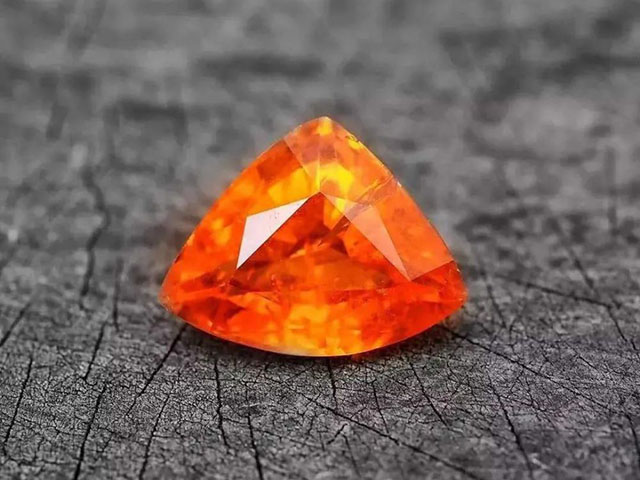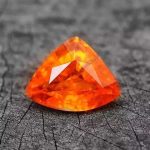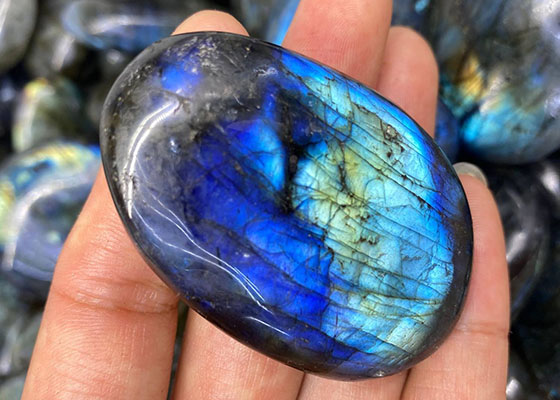Crystals and gemstones have long been treasured for their beauty, symbolism, and healing properties. Among the many types of stones available, orange calcite and citrine are two popular choices that often get compared due to their similar color and appearance. However, they are different in many ways, from their chemical composition and crystal structure to their metaphysical properties and uses. In this blog post, we’ll explore the differences between orange calcite and citrine, and help you choose which one is best for you.
Orange Calcite
Orange calcite is a type of calcium carbonate mineral that has a distinctive orange hue. It is often found in sedimentary rocks, limestone caves, and hot springs, and can also be artificially produced by heating other types of calcite. Some of the key characteristics of orange calcite include:
- Color: Orange to reddish-orange, sometimes with white or brown streaks
- Hardness: 3 on the Mohs scale (relatively soft)
- Crystal system: Trigonal
- Luster: Vitreous to dull
- Transparency: Translucent to opaque
- Other names: None commonly used
Orange calcite is a popular stone for use in jewelry, decor, and crystal healing. Its metaphysical properties are said to include promoting creativity, confidence, and positive energy flow. It is also associated with the sacral chakra, which governs emotions, sexuality, and creativity. Some common uses of orange calcite are:
- Wearing as a pendant, ring, or bracelet to enhance creativity and motivation
- Placing in the bedroom or meditation space to promote relaxation and positive energy
- Using in crystal grids or layouts to balance the sacral chakra and improve emotional well-being
- Holding or carrying during meditation or prayer to connect with the stone’s energy and intentions
Citrine
Citrine is a variety of quartz that ranges in color from pale yellow to deep orange-brown. It is formed when amethyst or smoky quartz is heated under high pressure and temperature, or when natural citrine crystals are found in the earth. Some of the key characteristics of citrine include:
- Color: Yellow to orange-brown, sometimes with white or brownish hues
- Hardness: 7 on the Mohs scale (relatively hard)
- Crystal system: Hexagonal
- Luster: Vitreous
- Transparency: Transparent to translucent
- Other names: None commonly used, but sometimes called “yellow quartz”
Citrine is a popular stone for use in jewelry, decor, and crystal healing. Its metaphysical properties are said to include promoting abundance, joy, and positive energy flow. It is also associated with the solar plexus chakra, which governs confidence, personal power, and self-esteem. Some common uses of citrine are:
- Wearing as a pendant, ring, or bracelet to attract abundance and prosperity
- Placing in the office or workspace to enhance creativity and focus
- Using in crystal grids or layouts to balance the solar plexus chakra and improve self-confidence
- Holding or carrying during meditation or prayer to connect with the stone’s energy and intentions
Differences Between Orange Calcite and Citrine
While orange calcite and citrine may look similar at first glance, there are several differences between them that set them apart. Here are some of the key differences:
Color and Appearance
Orange calcite is typically a bright orange or reddish-orange color, with a dull or slightly waxy luster. It may have white or brown streaks or veins, and can be opaque or translucent. In contrast, citrine ranges from pale yellow to deep orange-brown, with a bright vitreous luster. It is typically transparent or translucent, and may have some internal fractures or inclusions.
Chemical Composition and Crystal Structure
Orange calcite is a type of calcium carbonate mineral, which means it contains calcium, carbon, and oxygen atoms in a specific arrangement. It has a trigonal crystal structure, which gives it its characteristic shape and properties. Citrine, on the other hand, is a variety of quartz, which contains silicon and oxygen atoms in a specific arrangement. It has a hexagonal crystal structure, which gives it its unique shape and properties.
Rarity and Cost
Orange calcite is relatively common and easy to find, which means it is usually less expensive than citrine. Citrine, however, is rarer and more valuable, especially if it is natural and untreated. Most citrine on the market today is actually heat-treated amethyst or smoky quartz, which can affect its color and metaphysical properties.
Energy and Spiritual Properties
Orange calcite and citrine have different energy and spiritual properties, which may make them more suitable for different purposes. Orange calcite is often associated with creativity, emotions, and the sacral chakra, while citrine is associated with abundance, confidence, and the solar plexus chakra. Both stones are said to promote positive energy flow and help balance the body and mind.
Intended Uses and Benefits
While orange calcite and citrine may have some overlapping uses and benefits, they are often used for different purposes. Orange calcite is commonly used for promoting creativity, emotional healing, and relaxation, while citrine is used for attracting abundance, enhancing self-confidence, and improving focus. Both stones can be used for crystal healing, meditation, and manifestation, depending on the individual’s needs and intentions.
How to Choose Between Orange Calcite and Citrine
Choosing between orange calcite and citrine depends on several factors, including personal preferences, intended uses, and budget. Here are some considerations to keep in mind:
- Color and appearance: If you prefer a bright orange or reddish-orange stone, go for orange calcite. If you prefer a yellow to orange-brown stone with a brighter luster, choose citrine.
- Metaphysical properties: If you are looking for a stone that promotes creativity and emotions, consider orange calcite. If you are looking for a stone that enhances confidence and abundance, consider citrine.
- Intended uses: If you want a stone for relaxation, meditation, or emotional healing, orange calcite may be more suitable. If you want a stone for manifestation, abundance, or self-confidence, citrine may be more suitable.
- Budget: If you are on a tight budget, orange calcite is usually less expensive than citrine. However, if you are looking for a rare or natural stone, citrine may be more expensive.
It is also important to buy from a reliable source that provides information on the origin, quality, and treatment of the stone. Look for reputable crystal shops, online retailers, or metaphysical practitioners who can guide you in selecting the right stone for your needs.
Conclusion
Orange calcite and citrine are two beautiful and powerful stones that have their own unique properties and uses. While they may look similar at first glance, they are different in many ways, from their chemical composition and crystal structure to their metaphysical properties and intended uses. By understanding these differences and choosing the right stone for your needs, you can enhance your spiritual practice and bring more positivity and abundance into your life.




